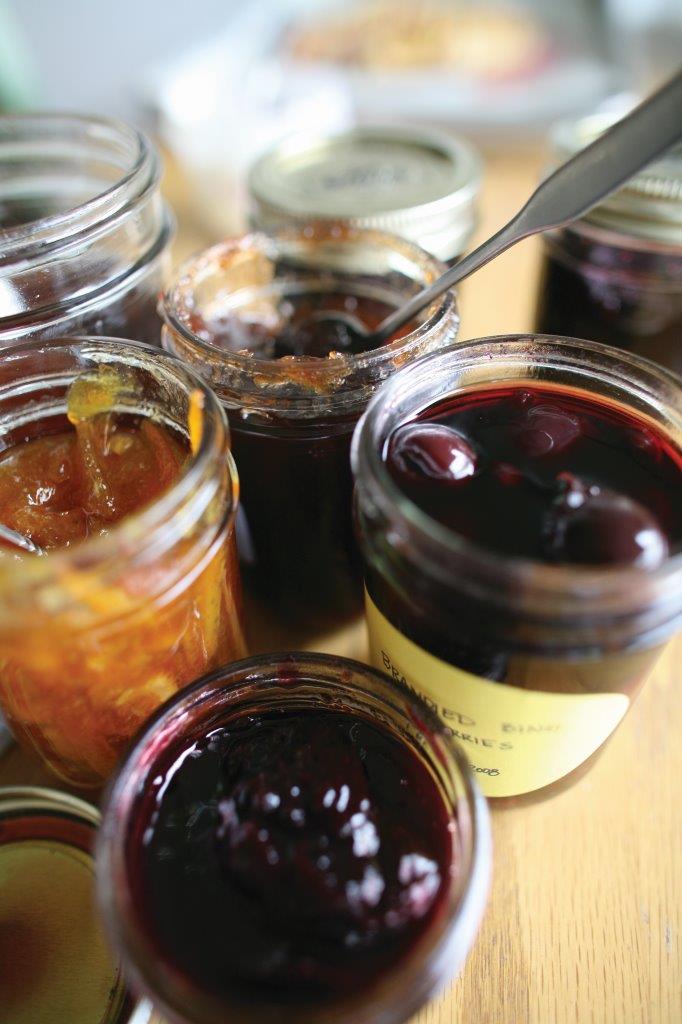Weekend DIY :: Boozy Blood Orange Marmalade Recipe
 Sundays are a perfect day for a longer kitchen project. We have settled into the ease of a weekend pace, have a bit more time for errands and tend to wind down early in the afternoon in preparation for the week ahead. For that, I introduce Weekend DIY a new article highlighting a small and awesome food project that is easy to tackle on the weekend.
This week, take advantage of winter citrus before they disappear. This recipe will keep your pantry stocked for the year.
Sundays are a perfect day for a longer kitchen project. We have settled into the ease of a weekend pace, have a bit more time for errands and tend to wind down early in the afternoon in preparation for the week ahead. For that, I introduce Weekend DIY a new article highlighting a small and awesome food project that is easy to tackle on the weekend.
This week, take advantage of winter citrus before they disappear. This recipe will keep your pantry stocked for the year.
(Unless you're a marmalade-consuming-monster, that is.) Thankfully, winter is the time of year where citrus shines, and many tree fruits are coming into season. Citrus of all varieties flood the markets in waves – first the Meyer Lemons in December arrive, with Blood Oranges, Cara Cara’s and more following in the new year. For now, grab the last of the blood oranges which are toward the end of their availability and try this boozy marmalade, which I know you'll love. The flavor is a more complex take on traditional marmalade - the bourbon adds an earthy quality that I love. Try this as a side on your next cheese plate (and aged Gouda or Old Amsterdam work perfectly) and the Almond Cracker recipe found in Urban Pantry. You won't regret it!
Boozy Blood Orange Marmalade (photo cred = the impeccable Della Chen Photography) [ Makes about 5 half pints ]
I’m not sure how I got the idea to add booze to marmalade, but the experiment ended up being a success. A splash of bourbon intensifies the flavor and also helps mellow out the sour edge a marmalade can have. The secret to a good marmalade is in your preparation. This is a lengthy process, so I typically make one big batch a year and then call it done. All that outer peel slicing is time consuming, so plan for a couple of hours, at least. Making this marmalade in stages helps to break it down. If you can’t source blood oranges, use lemons instead, which are in season at the same time.
2 pounds blood oranges, scrubbed, peeled, halved, and juiced (seeds reserved in a muslin bag) 1 lemon, scrubbed, peeled, halved, and juiced (seeds reserved in a muslin bag) 3 cups water 2 to 3 cups sugar 3 to 4 tablespoons bourbon
With a vegetable peeler, remove the outer peel from both the oranges and the lemon, avoiding the white pith. Cut the peel into very thin strips and toss into a large pot. (Wider pots are better for jammaking than deep pots.) Pour the orange juice and lemon juice into the large saucepot, along with the muslin bag of reserved seeds. Add the peels, the lemon halves, and 4 of the orange halves. Add the water and set over medium-high heat. Bring the mixture to a boil and then reduce the heat to a simmer, cooking until the rinds are soft, about 30 minutes. Cover the saucepot and put in the refrigerator for at least 6 hours or overnight.
Measure the marmalade. For every cup of citrus and liquid, add 3/4 cup of sugar to the saucepot. (So, 4 cups of citrus equals 3 cups of sugar.) For every cup of citrus, measure out 1 tablespoon of bourbon and set aside. Return the saucepot to medium-low heat and cook down the mixture. Skim off any foam that forms and stir the marmalade often. Put a plate into the freezer for testing the set. Cook until the marmalade gels, about 30 minutes to an hour (depending on how wide your saucepot is).
Prepare jars for canning. To test the marmalade, remove the plate from the freezer, spoon a small amount onto the cold plate, and let it sit a moment. Push the marmalade with your fingertip. If a wrinkle forms in the jelly, the marmalade is done. If it is loose and runny, keep cooking and stirring until thickened. When your desired consistency is reached, remove the muslin bag of seeds and the citrus halves, squeezing any excess juice into the saucepot. You can compost your solids.
Add the marmalade to the jars. Using a damp clean towel, wipe the rims of the jars, and place lids and rings on the jars. Process in a water bath for 10 minutes.
Remove the jars with tongs and let them cool on the counter. When cooled, remove the metal rings, check for proper seals, and label with date and contents. Store in a cool, dark cupboard until ready to use, for up to a year.
Pantry Note: This marmalade is a consummate pantry staple because of its ability to be served with sweet or savory foods. Use this on your toast, or smear a layer on the bottom of an Almond—Butter Tart. You can also add some fresh garlic and water to the marmalade for a wonderful marinade and glaze for fish, chicken, or duck. Spread some on the meat and cook according to directions. I also serve marmalade on cheese plates alongside a soft creamy cheese. Store in the fridge after opening.
Washed jars; water bath (directions online here.)
